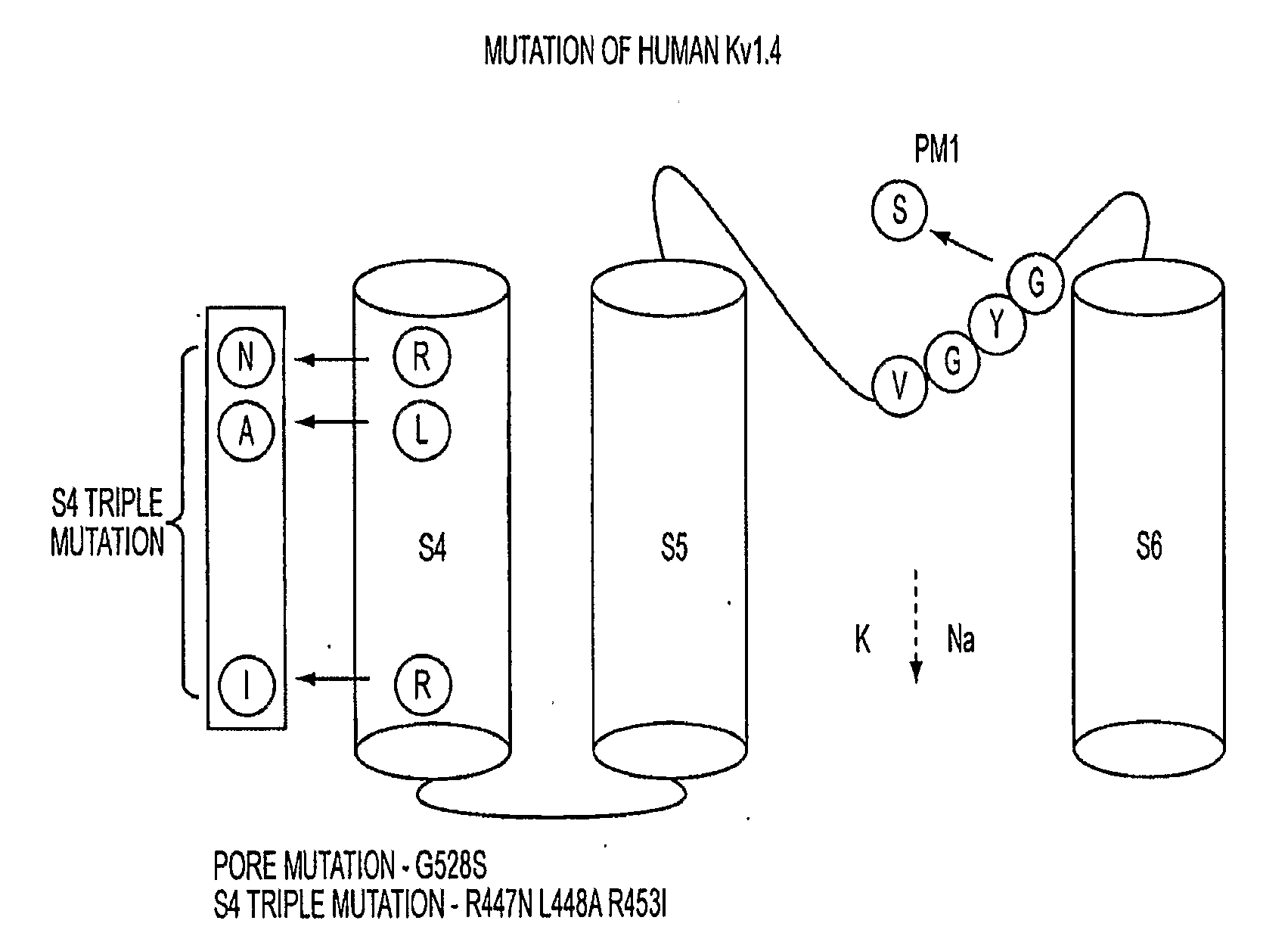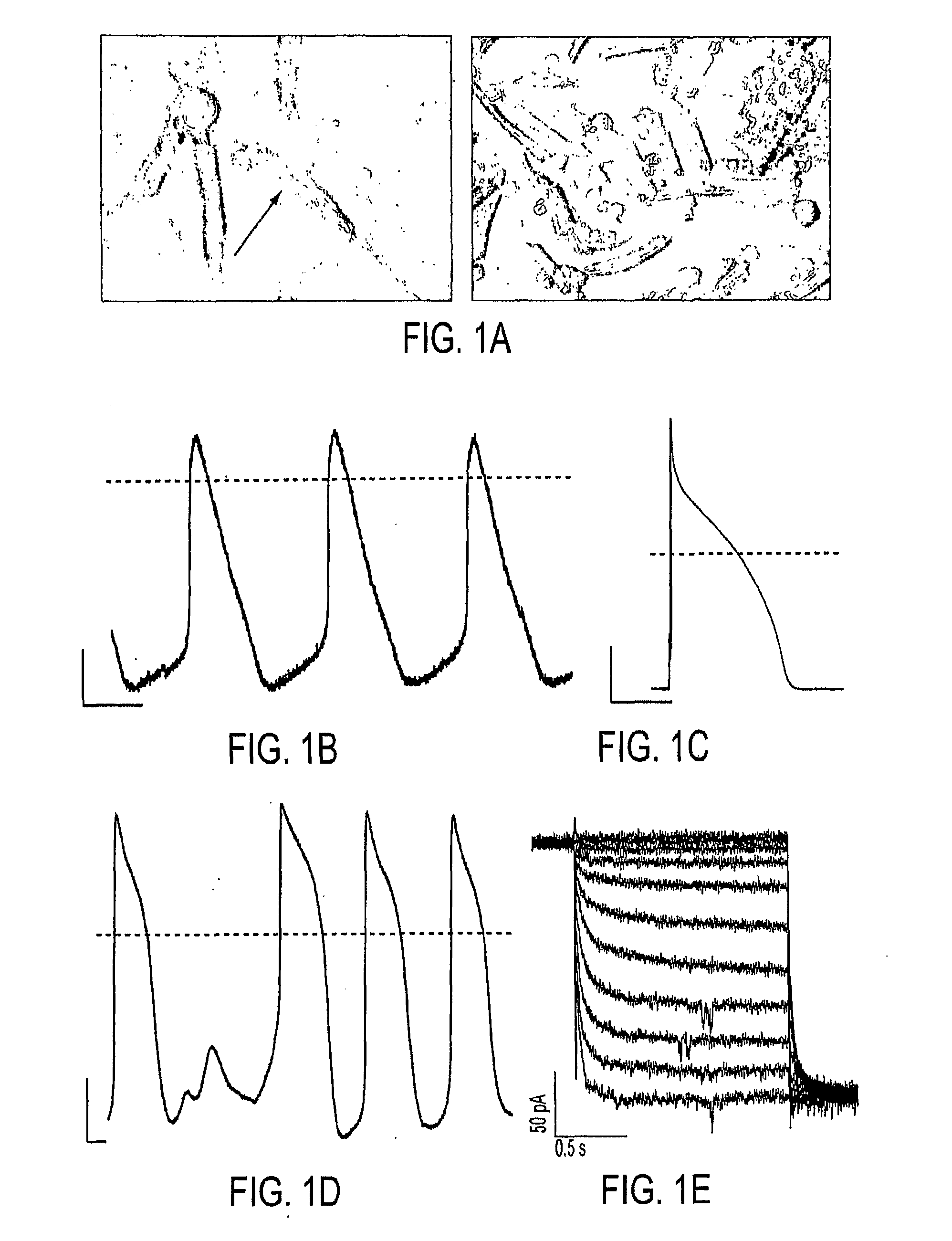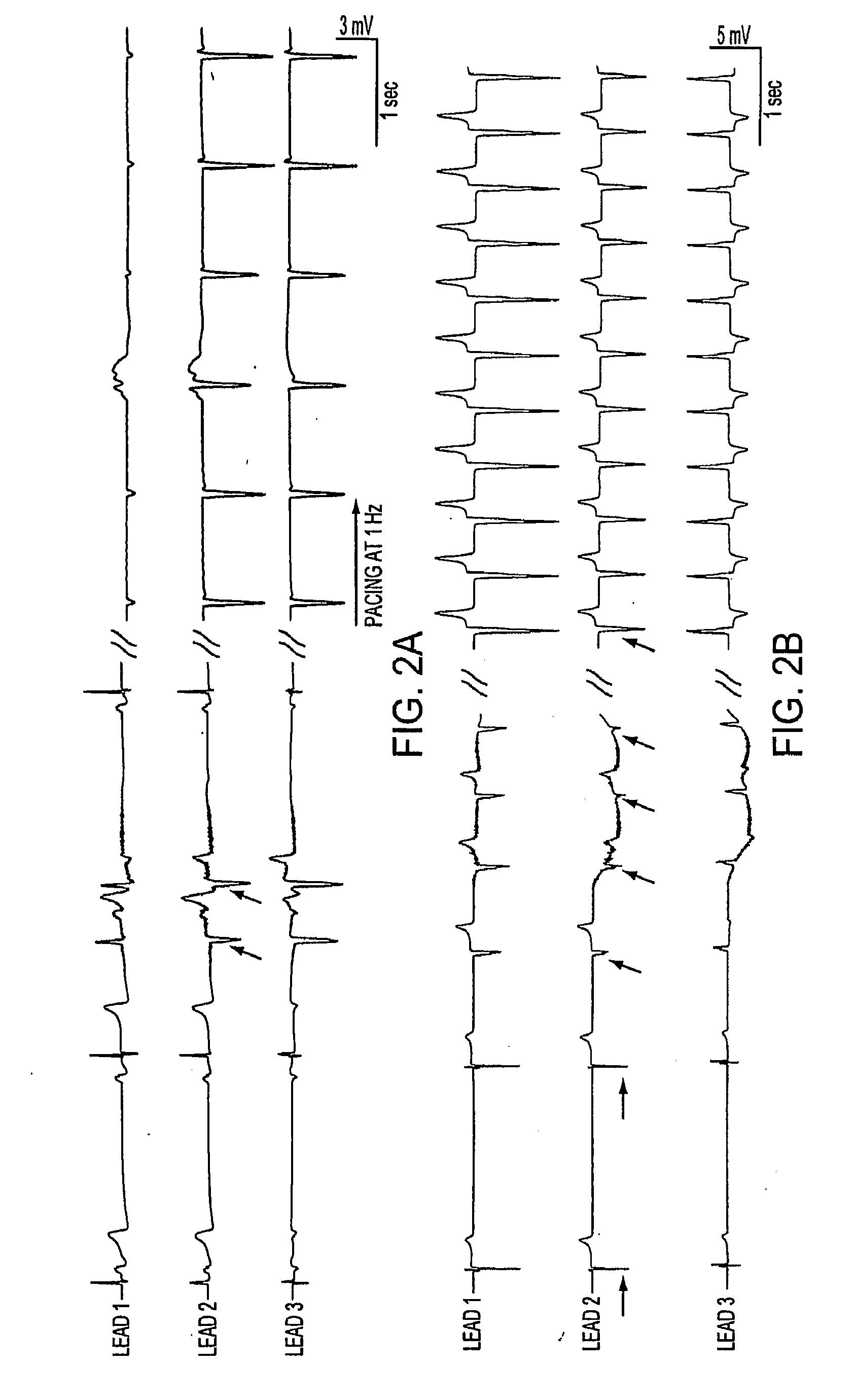Biologically excitable cells
a technology of excitable cells and cells, applied in the field of excitable cells, can solve the problems of confounded use of hcn genes, unpredicted consequences of hcn gene transfer in vivo, and low flexibility of use of wild-type channels in frequency tuning of engineered pacemakers
- Summary
- Abstract
- Description
- Claims
- Application Information
AI Technical Summary
Benefits of technology
Problems solved by technology
Method used
Image
Examples
example 1
Materials and Methods
Plasmid Construction, and Adenovirus Preparation, and Mutation
[0036]Human Kv1.4 cDNA was subcloned from XL-4 vector (OriGene Technologies, Inc. Rockville, Md.) to pTracerCMV2 plasmid (Invitrogen, Carlsbad, Calif.) between EcoRI and NotI sites. The adenovirus shuttle vector pAdCGI was used for generation of adeno / S4TK1.4GYS-IRES GFP. Adenovirus was produced as previously described1. Oligonucleotide mutagenesis was performed with site-direct mutagenesis kit (Stratagene, La Jolla, Calif.).
Transient Transfections of Cultured Cell Lines
[0037]HEK293 cells were seeded at a density of 2.0×105 per 35-mm2 the day before transfection. Cells were transfected with Lipofectamine 2000 (Invitrogen, Carlsbad, Calif.) according to manufacturer's protocol. Voltage- and current-clamp recording were carried out within 18-48 hours post-transfection.
Ventricular Myocyte Isolation
[0038]Guinea pig left ventricular myocytes were isolated using Langendorff perfusion, as previously describe...
example 2
Creation of a Biological Pacemaker by Cell Fusion
[0051]As an alternative strategy to electronic pacemakers or to gene therapy / stem cell approaches, we explored the feasibility of converting ventricular myocytes into pacemakers by cell fusion. The idea is to create chemically-induced fusion between ventricular myocytes and syngeneic fibroblasts engineered to express pacemaker ion channels, HCN1.
[0052]In order to examine fusion events, guinea pig lung fibroblasts stably expressing HCN1 channels (HCN1-fibroblasts) were fused with freshly-isolated guinea pig ventricular myocytes using polyethylene glycol (PEG). Within 3 minutes of dehydration and rehydration, the HCN1-fibroblasts fused with ventricular myocytes as verified by the sudden introduction of Calcein-AM fluorescence into the myocytes (FIG. 1A). Current-clamp of the myocyte / HCN1-fibroblast heterokaryon exhibited spontaneous action potentials with a slow phase-4 depolarization (FIG. 1B), suggesting the expression of pacemaker cu...
example 3
Conversion of Non-Excitable Cells to Self-Contained Biological Pacemakers
[0059]In pacemaker cells of the sinoatrial node, voltage- and time-dependent membrane ionic currents generate spontaneous action potentials (APs). We hypothesized that a non-excitable cell could be converted into a pacemaker by heterologous expression of a minimal complement of specific ion channels. To this end, HEK293 cells were engineered to express the following ionic currents: 1) an excitatory current 2) an early repolarizing current, and 3) an inward rectifier current. A Na+ channel from bacteria (NaChBac)17 (FIG. 4A, left) was chosen for the excitatory current because of its slow gating kinetics and its compact cDNA, human ether-a-go-go related gene channels (hERG)18 (FIG. 4A, middle) for repolarizing current to activate and counter the depolarizing effects of NaChBac, and Kir2.119 (FIG. 4A, right) to favor a negative diastolic potential.
[0060]In current-clamp recordings at room temperature, action poten...
PUM
| Property | Measurement | Unit |
|---|---|---|
| tip resistances | aaaaa | aaaaa |
| concentration | aaaaa | aaaaa |
| temperature | aaaaa | aaaaa |
Abstract
Description
Claims
Application Information
 Login to View More
Login to View More - R&D
- Intellectual Property
- Life Sciences
- Materials
- Tech Scout
- Unparalleled Data Quality
- Higher Quality Content
- 60% Fewer Hallucinations
Browse by: Latest US Patents, China's latest patents, Technical Efficacy Thesaurus, Application Domain, Technology Topic, Popular Technical Reports.
© 2025 PatSnap. All rights reserved.Legal|Privacy policy|Modern Slavery Act Transparency Statement|Sitemap|About US| Contact US: help@patsnap.com



